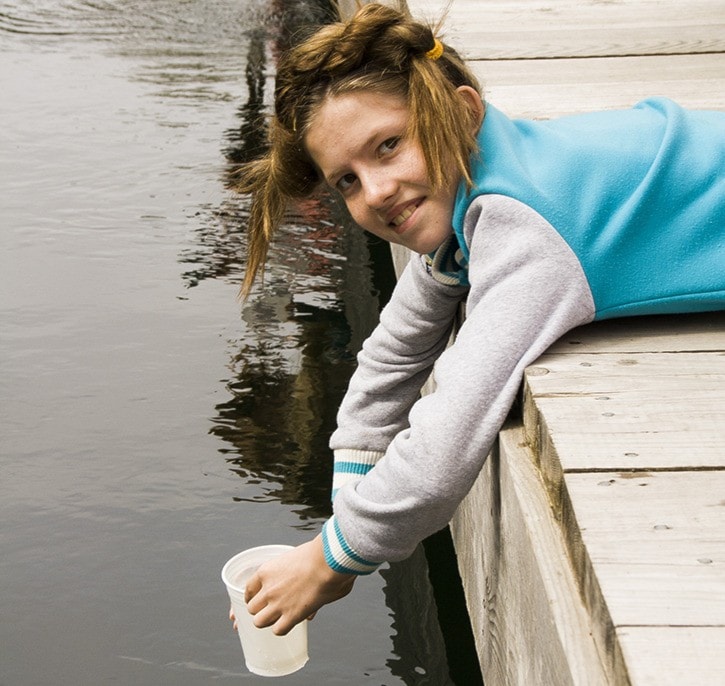Lindsay Hartshorn’s Grade 4/5 students are taking their lessons out of the classroom and into the community once again, this time to release newly hatched salmon into the Cowichan River.
The class participated in the salmon release program in partnership with the Cowichan Lake Salmonid Enhancement Society, which operates the local fish hatchery. Hartshorn’s students learned about the life cycle and habitat of salmon, while raising 100 chum salmon from eggs in a tank in their classroom.
“Last year we got eggs that had already hatched so it was a little more exciting this year to see the hatching,” said Hartshorn.
The eggs arrived in January and had hatched by March. When the students left for spring break, the fry were still in the alevins stage of development, which meant they obtained nutrients through a yolk sac attached to their bodies.
“Before we left [the alevins] were just kind of hovering around the bottom, so they were kind of boring. When we came back the kids were really excited to see the salmon all over the tank, darting all over the place,” said Hartshorn.
This is Hartshon’s second year participating in the program. which she plans to continue with future classes.
“They know a lot about the salmon life cycle now. They’re enthusiastic, engaged. It’s been great,” she said.
Hartshorn said she hopes the experience will foster a sense of environmental stewardship in her students.
Bob Crandall, president of the Cowichan Lake Salmonid Enhancement Society, said the same thing.
“We encourage the next generation to become involved with and care about the environment that they’re in and the lifeforms that are in the ecosystem that they live in. And that’s what we hope the children take away from it,” he said.
On April 15, Crandall moved the tiny salmon from Hartshorn’s classroom to the public dock at Saywell Park where students then transferred the fish into the water.
“It’s a hands-on activity and hands-on activities when it comes to education [the lesson] sticks in their memory and they remember it,” he said.
The chum salmon have among the largest numbers in the Cowichan River and their bodies ultimately provide nutrients for the entire ecosystem.
Crandall said it’s especially important for children in the Cowichan Lake area to learn about fish ecosystems and life cycles because of the proximity of the Cowichan River.
“There are plenty of species of fish in this heritage river that are keystone and endangered,” he said. “It’s up to the children who will become the next adults to be the stream keepers and caretakers and stakeholders of this ecosystem.”
One of those next-generation stakeholders is student Casey Nickel who had mixed feelings about saying goodbye to the tiny fish.
“I want to know why we can’t keep the salmon. It would be fun,” Casey said, although she admitted it was fun getting to set them free.
“Now they have their own nature to live in. They go from here to the ocean and the estuary. And then they come back and spawn.”
